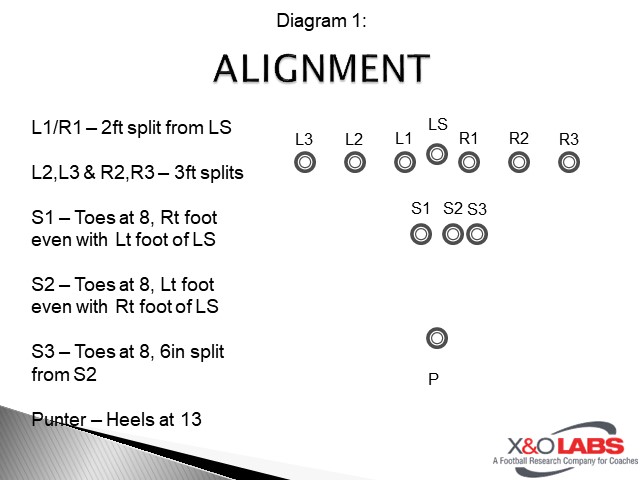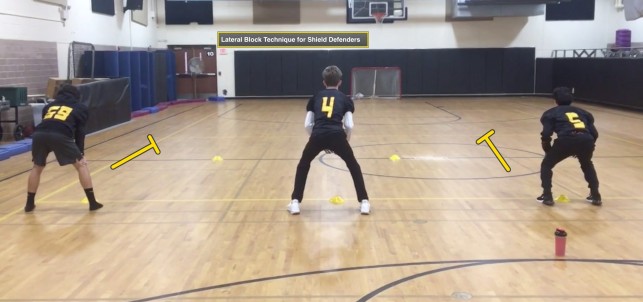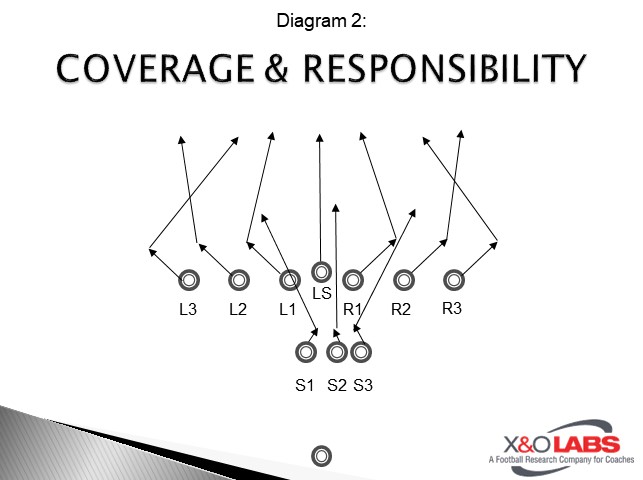By Gabriel Ostrander
Defensive Coordinator
Elmwood Park High School (IL)
Twitter: @EPTigerFBall
When I became the Special Teams Coordinator I looked at our previous Special Teams packages and our current roster. At Elmwood Park, we generally are not blessed with college athletes or speed and power combination kids. We either have kids that can run and play in space or kids that are physical but don't move well. After doing research I found the system that I felt would best fit our kids, the Shield Punt. I chose this scheme for 3 essential reasons:
- Simple blocking assignments that don’t require size or skill.
- 7 immediate cover players to help eliminate 1 on 1 open field tackling.
- How do teams line-up to it and pressure?


Alignment:
Alignment is fairly simple; the front line involves 7 players in a straight line on the LOS. Players on the left side are labeled from inside to outside L1, L2, L3 players on the right side are labeled inside to outside R1, R2, R3. R1/L1 fit 2 feet away from the long snapper. The rest have 3 foot splits away from the player next to them. We tighten down the L1/R1 splits in order to help with inside pressure as our long snapper immediately releases downfield.
The Shield lines up toes at 8yds. S1 lines up with his right foot even with the left foot of the long snapper. S2 lines up with his left foot even with the right foot of the long snapper. S3 has a 6inch split from S2.
The Punter lines up in the gap created by the shield and directly behind the long snapper with his heels at 13yds.

Responsibilities and Coverage:
As I mentioned previously, one of the major reasons we went to this style is because it gave us 7 immediate ball defenders. We don’t spend time blocking/protecting, the ball is snapped and the expectation is to get on your horse to make a play on the ball carrier.
Front 7:
The long snapper snaps the ball and is a straight ball player. I have explained it as if he has a string tied to the return wherever he goes you follow. When the ball has been snapped, L1-L3 & R1-R3 are expected to “punch across” the face of the 1st defensive player outside of him and then get back on track towards the ball carrier. L3 & R3 are straight ball players, go make a tackle. As for the other 4 defenders they play “soft lanes” with L2 & R2 playing as pseudo contain players and L1 & R1 playing as inside lane players. L1-L3 & R1-R3 all act as outside-in leverage players, we want them to fit with their inside shoulder or inside number on the outside number/shoulder of the ball carrier.









